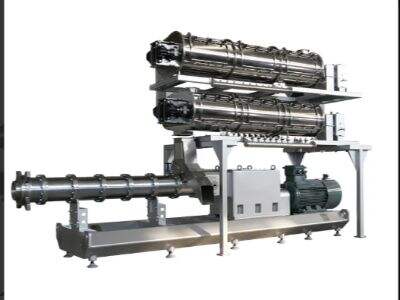Mashinlar turli materiallarni tartiblash va sinflashtirishda muhim rol oynaydi va ikki asosiy turga bo'linadi: aylantiruvchi va siljishli ekranlar. Ular bir-biridan farq qilmasligini o'ylash mumkin, lekin ularga oralarda muhim farq bor. Bu mashinalar Shanghaida yotuvchi Shanghaj Yuanyuda kompaniyasi tomonidan ishlab chiqilgan. Endi aylantiruvchi va siljishli ekranlar nima asosida guruhlangan yoki joylashtirilganligini tahlil qilish vaqti!
Aylantiruvchi Ekranlar nima va ular siljishli ekranlar bilan bog'liq farqlari va o'xshashliklari nima?
Aylantiruvchi va siljishli ekranlar orasidagi boshqa farq ularning ushbu jihatdan ishlashi usuli. Aylantiruvchi ekranlar materiallarni ekran bo'yicha pastga tekishtirish uchun doyimiy davrda aylantiradi (Ferris dairinga o'xshab). Aks holda, siljishli ekranlar orqaga va oldiga harakatlanadi, nima dir boshidan boshlab tepadan pastga o'shib ketishi kabi. Shanghaj Yuanyuda siljish harakati amplitudasi granulyatsiya-texnika материал ўрнига сифатда ташкил этиладиган конвейерга айлантириб беради. Бу устувор материаллар хажми учун ва кatta хажмли материалларни божхона қилиш керак бўлган жаҳонда айланган экранлардан фойдаланишга да вақтидаги эртакларга эга. Ук турдаги экранлар эса кам хажмли материал билан ишлаш учун маъқул ва минимал толеранс билан божхона ҳисобида энг мулоим.
Айланған Вибрируюший Кlassifikatorлар
Yuqorida aylantiruvchi klassifikatorlar va siljish klassifikatorlari ish mekanizmi haqida bahamiz boldi, endi ular orasidagi farqlarni tushunish uchun quyidagilarni ko'rib chiqamiz. Aylantiruvchi klassifikatorlar umumiy ravishda yuqori mahsulotlar uchun tanlangan bo'ladi, masalan, qum yoki toz. Bu esa tezroq katta hajmdagi yuqoq materiallarni tartibga solish talab qilinadigan (masalan, qurilish yoki madeniyot) sanoatlar uchun ularni ideal qiladi. Ammo siljish klassifikatorlari esa oddiy materiallardan foydalaniladi, shuningdek quyosh yoki suspensiya haqidagi qo'shimcha ma'lumotlar pastda keltirilgan. Hammasa, zarbalar materiallarni tartibga solishda eng yaxshi natija beradi, chunki ularning ishlash principi siljish asosida olib keladi.
To'rtinchi farq hala ham sanoatning katta hajmi va nisbiy chekkin narxlari orqali ifodalanadi. Aylanma siniflayituvchilar ko'p xolda katta bo'lgan va muvaffaqiyat bilan qo'shiq siniflayituvchilarga nisbatan mahsulotlariga xarajat qiladi. Ammo, tartiblashning juda yuqori darajadagi aniqligi talab etilgan holda, shu jumladan ozi, qo'shiq siniflayituvchilar oldindagi bo'ladi. Shuningdek, ular bir necha segmentda, masalan, ovqat segmentida juda aniqlar ekanligi muhim hisoblanadi. Ovqat ishlab chiqarishda, materiallar aksariyatda turli xil hajmlarga ajratilishi kerak, chunki bu ovqatni yaxshiroq va turli xil xavfsizlik standartlariga mos kelishi uchun zarur. extruder-equipment shunday qilib, qog'oz ishlab chiqarishda Shanghai Yuanyuda eng yaxshi natija beradi, lekin kamroq kasb-kasbi ishlarda vakuum va qo'shiq siniflayituvchilar talab qilinadi.
Quvvatli va qo'shiq ekranlarni sanoatlarda ishlatishda mantiqiy ravishda foydalar va kamchiliklar mavjud, shu jumladan quyidagilar.
Keyingi bosqichda har bir ekran turi ning imkoniyatlari va kamchiliklari haqida gapirib chiqamiz. Aylantiruvchi ekranlar quyidagi imkoniyatlarga ega: Bu, ularning bir vaqtning oʻzida koʻp hajmdagi materialni boshqarishiga qodir boʻlishini anglatadi, shuning uchun katta hajmdagi ish uchun muhimdir. Ular hamda, titrishi bor ekranlardan koʻproq quvvatli va mos holatlarda koʻproq xizmat koʻrsatishi mumkin. Ammo, ularning kamchiliklari orasida ularning umumiy ravishda qimmatroq boʻlishi va koʻproq ehtiyoj talab qilishi kerak boʻlishi mumkin.
Bir tomondan, titrashli ekranlar quyidagi jadvalda keltirilganidek, maxsus qiymatlarni yaxshilashga va'da bermoqda; Shu jihatdan ular umumiy ravishda aylantiruvchi ekranlardan arzonroq va undan kamroq xizmat ko'rsatish talab qiladi, bu esa ularni foydalanish uchun effektiv bo'ladi. Ammo, ular aylantiruvchi ekranlardan osonroq suzib ketishi mumkin, chunki ular ishlatilganda uzun davom etmaydi. Ular hala ham foydalanilayotgan material miqdoridan qat'i narsa bo'lmagan holda juda effektiv ishlaydi, shuning uchun zamonaviy sohasida aniqlik talab etiladigan bosqichlarda ishlatiladi.
Yuqorida keltirilgan materiallar keyingi operatsiyalar uchun aylantiruvchi va titrashli sintralardan o'tkaziladi.
Endi har bir shu klassifikatorlarni va uning ichki hisoblanishi bilan tanishamiz. Rotatsion klassifikatorlarning funktsional ish rejasi: Ekranni aylantirish materiallarni kichik chorvonalarga o'tishiga sabab bo'ladi. Katta material yuqorida qoladi va biror vaqtning o'zida ekranning oxiriga chiqariladi, tomonlaridan; kichik material esa ekrandan o'tish uchun vaqt sarflaydi. Xususan, ushbu usul tartiblash operatsiyasi uchun eng effektli hisoblanadi.
Aksincha, siljish klassifikatorlari ekranni siljitish usulidan foydalanadi. Siljish harakati ekran ustidagi materiallarni harakatga tushiradi va ularni hajmini bo'yicha tartiblaydi. Va, ekran chochalari ushbu jarayonda muhim rol oynaydi. Haqiqatan ham, chochalarning hajmi o'sha choqalar orqali o'tishi mumkin bo'lgan materialning hajmini aniqlaydi. Keyinchalik material ko'proq sanoatlar uchun aniqroq tartiblangan bo'ladi, agar choqalar kichkina bo'lsa.
Klassifikatsiya Ekranlari: To'g'riini tanlash uchun qo'llanma
Ushbu sinflashtirish ekranini tanlashda quyidagilarni hisobga olish muhim bo'lishi kerak. Endi ushbu turi konsepsiyani to'g'ri qo'llab-quvvatlash uchun, birinchi sirta, nima turdagi obyektlarni yoki narsalarni tartibga solmoqchi ekanligingiz haqida o'ylang. U shundaymi yo'ki nam? Ikkinchi sirta, saralash uchun kerak bo'ladigan ma'lumot miqdorini hisobga oling. Shu jumladan, ko'p deb hisoblayman yoki kam? Oxirgi, lekin eng asosiy nuroq, qanday darajadagi to'qirlilikni tartibga solish uchun kerak ekanligingiz haqida o'ylang. Asosan, Shanghai Yuanyuda. grinding-equipment katta hajmdagi yengil material bilan ishlamoqda ekanligimni hisobga olsak, bu eng yaxshi va amaliy tarzda bo'lishi mumkin. Ammo agar siz nam maxsulotlarni aniq tartibga keltirmoqchisiz, unda singaruvchi sinflashtiruvchi sizning talabingizga ko'ra eng yaxshi yo'l bo'ladi.
Har qanday holatda, rotatsion klassifikatorlar va siljish klassifikatorlari bilan bir qattida, ular orasida shunga qaramasdan o'xshashlik mavjud bo'lishi mumkin, ammo unutmangki, ularning ikkalasi farqli printsiplardan foydalanadi va bu farq yaratadi. Ular orasidagi farqlarni tushunish, sizga qaysi turdagi ekran siz uchun eng yaxshi bo'lganini tanlashda yordam beradi. Shanghai Yuanyuda kompaniyasi materiallarni ajratish va sinflashtirish uchun aylana va siljish klassifikatorlari bilan shug'ullanadi. Agar sizda savollar yoki vazifani bajarish uchun to'g'ri mahsulot va yechimni tanlashda yordam kerak bo'lsa, murojaat qilishdan himoya qilmang!
Tarkib jadvali
- Aylantiruvchi Ekranlar nima va ular siljishli ekranlar bilan bog'liq farqlari va o'xshashliklari nima?
- Айланған Вибрируюший Кlassifikatorлар
- Quvvatli va qo'shiq ekranlarni sanoatlarda ishlatishda mantiqiy ravishda foydalar va kamchiliklar mavjud, shu jumladan quyidagilar.
- Klassifikatsiya Ekranlari: To'g'riini tanlash uchun qo'llanma

 EN
EN















